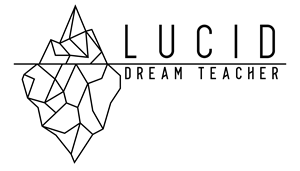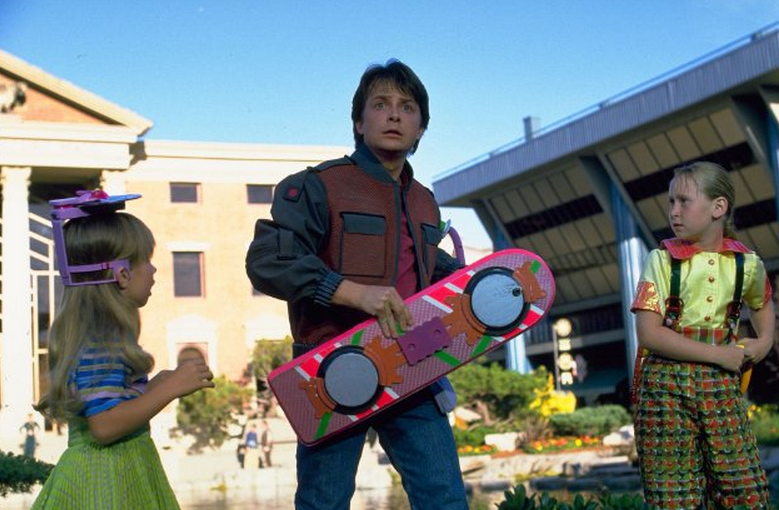Remembering the Future
I spent a lot of time walking to classes in college. This was when I first experimented with time travel. The campus was large, the walks were long, monotonous, and occasionally wind whipping cold. There was plenty of time to let my thoughts wander. I would often fantasize about instantaneously arriving at my destination. I guess I should have been contemplating teleportation but, instead, I thought about time travel. Perhaps not the time travel where I would come face-to-face with the future “me” and we would both be sucked through a wormhole or something. No, I just wanted to immediately (at least mentally) arrive in my future state to avoid the rest of the 40 minute walk. So, I decided to start small and simply send messages to myself in a future state. The experiment looked something like this:
-
Take note of my current position (passing the fountain in front of the library)
-
Choose a future point in my trip (footbridge near my dormitory)
-
Declare a message to my future self (“Hello from the past!”)
-
Upon reaching the destination, turn back, mentally replay the message and return the greeting (“Hello from the future…” or something of the sort.)
Of course, this was not time travel at all. The whole thing played out in my mind with no physical component aside from raising a hand to wave and saying hello to someone in the distance who wasn’t there yet… or, anymore. Initially, if I chose a destination point that was too far away, I would often forget to receive the message. Other thoughts or distractions would set in and the experiment would be abandoned. I would totally leave myself hanging back there. Not by choice, of course. I would just forget. My next move was to shorten up the distance covered by the experiment in both space and time. Rather than a mile gap, I would start with five light posts or about 100 yards. Once I could cover the distance and remember to receive the message, I would stretch it out further. Shorter distances meant that I could keep the task front-of-mind. However, for the longer ranges, I would have to permit my mind to move to other topics but eventually come back either near to or at the destination point to recall the message which is far more challenging.
What I knew at the time was that I had come up with an odd way to pass the time on lengthy walks about campus. What I didn’t know was that I was actually practicing and advancing a cognitive skill that is tremendously valuable to those who pursue a lucid dreaming practice. The skill is called prospective memory or, memory of the future.
Everyone uses prospective memory. “When I pass the grocery store today, I will remember to stop in to buy a gallon of milk.” When 7:00 PM rolls around, my son will remember that his favorite show is starting. Ok, bad example, no one has to remember what time shows start anymore. Nonetheless, that is the practical application. At some future time or place or even during a future situation, you will remember to do something or say something. Is it a skill? Sure, some of us will still proceed to drive right past the grocery store several hours later. The next morning, they will open the fridge and… oops. Dry cereal. Prospective memory can also be enhanced through practice. From five light posts up to a mile or so on foot. Like any other muscle, flex and strengthen.
What does all of this have to do with lucid dreaming? Well, instead of remembering to pick up the milk when you pass the grocery store, you are going to remember that you are dreaming the next time you… are dreaming. Or, you will remember to do a reality check next time you are dreaming. A strong ability to remember to do things in the future will get you closer to your lucid dreaming goal. Perhaps you have been keeping a dream journal and, in that journal, you have started to notice common themes that are not common in your waking life. These are commonly called dreamsigns or recurring dreamsigns. It could be a person from your past or situation like being back in school. They don’t relate to your waking life but pop up frequently in your dreams. So, set the intention that next time you are standing shoeless in your old elementary school, you will do a reality check and thoroughly evaluate your surroundings. Of course, it may not be that easy. You have to bridge that intention from your conscious thought process over to your “auto pilot” dreaming mind but with practice and a strong prospective memory, you will get there.
So, you are not walking endlessly around a college campus and want to know how to strengthen your prospective memory in everyday life? One idea is to wake up in the morning and decide on one “trigger” for the day. This will be one thing that you know you will see and when you do, you will recall the experiment and conduct a reality check. For example, you could use your mailbox as a trigger. Every time you see it, you will do a reality check. It’s not something that you see often throughout the day but enough. At the end of the day, asses your success. Did the mailbox prompt any reality checks? Some, none? Try again the next day with the same or a different trigger. If you are getting good with the mailbox, pick something different. Try picking two or three different triggers. If you are consistently conducting reality checks when encountering your triggers throughout the day, not only are you strengthening your prospective memory but you are also getting into a solid reality check practice. Each of these will serve you well in your lucid dreaming quest whether or not you choose say hello to yourself from the future.
Patrick Paulin
2018-01-19T15:14:01-05:00
Share This Story, Choose Your Platform!


Leave A Comment